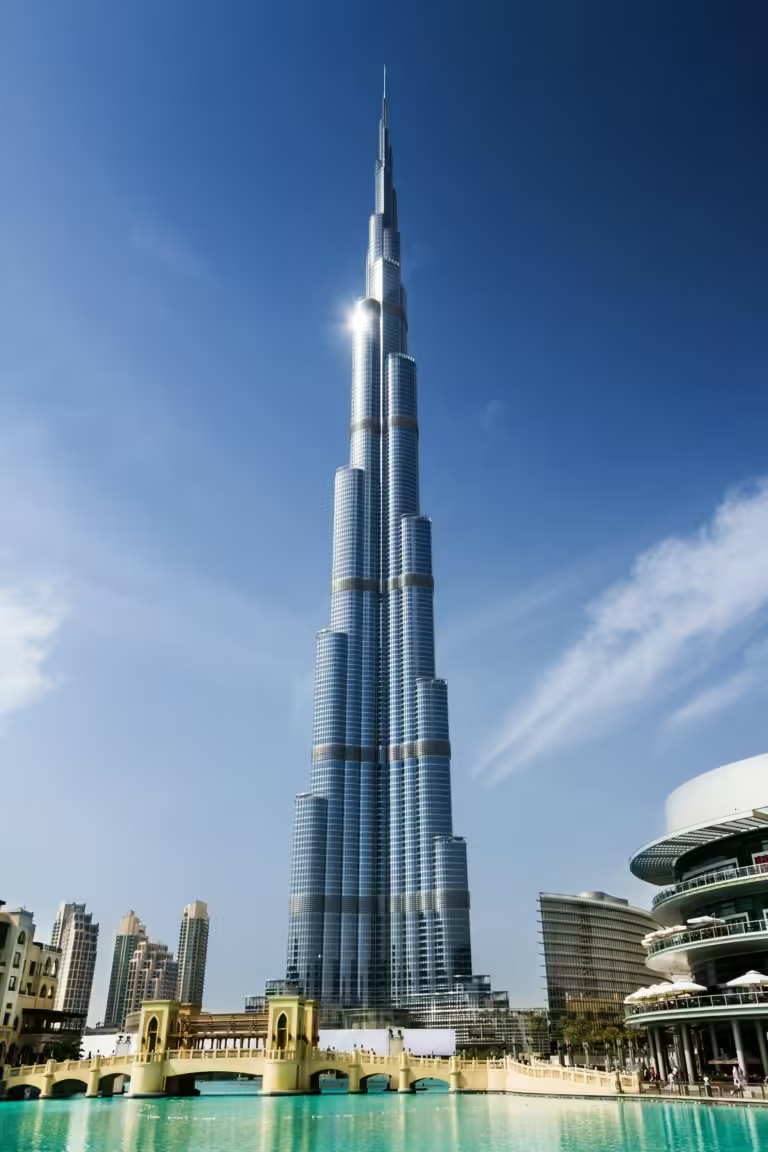Here is a list of top 10 richest countries in the world by GDP per capita in 2024:
1.Luxembourg:$143,320
2.Ireland:$137,640
3.Singapore:$133,110
4.Qatar:$114,210
5.Macao:$98,160
6.Switzerland:$89,540
7.United Arab Emirates:$88,960
8.San Marino:$84,140
9.Norway:$82,240
10.United States:$80,410
1.Luxembourg
GDP per capita:$143,320
Luxembourg is often cited as one of the richest countries in the world by GDP per capita.
Reasons for Luxembourg’s High GDP Per Capita
Financial Services Sector:
- Banking and Investment Funds: Luxembourg is a major financial hub, hosting numerous international banks, investment funds, and financial services companies. The financial sector is a significant contributor to the country’s GDP.
- Favorable Regulations: The country has favorable regulations and tax policies that attract financial institutions and multinational corporations.
Diversified Economy:
- High-Tech Industries: Luxembourg has invested in high-tech industries and innovation, fostering growth in sectors like information technology, biotechnology, and logistics.
- Steel Industry: Historically, Luxembourg’s economy was based on steel production, which remains an important sector.
Strategic Location:
- Central Location in Europe: Luxembourg’s central location in Europe makes it an attractive base for companies looking to do business across the continent. Its proximity to major European markets like Germany, France, and Belgium enhances trade and economic activity.
High Standard of Living:
- Quality of Life: Luxembourg offers a high standard of living with excellent healthcare, education, and social services, contributing to the well-being and productivity of its residents.
- High Wages and Employment Rates: The country boasts high average wages and low unemployment rates.
Political and Economic Stability:
- Stable Government: Luxembourg has a stable political environment, which fosters economic confidence and attracts investment.
- Strong Legal Framework: A robust legal framework supports business operations and protects investments.
Key Economic Indicators
GDP Per Capita:
- Luxembourg consistently ranks among the top countries globally for GDP per capita. According to data from the International Monetary Fund (IMF) and the World Bank, its GDP per capita is one of the highest in the world.
Economic Growth:
- Despite its small size, Luxembourg maintains steady economic growth, driven by its diverse economy and strategic investments.
Low Public Debt:
- The country has low levels of public debt relative to its GDP, contributing to its economic stability and ability to invest in infrastructure and services.

2.Ireland
GDP per capita:$137,640
Reasons for Ireland’s High GDP Per Capita
Foreign Direct Investment (FDI):
- Multinational Corporations: Ireland is a favored destination for multinational corporations, especially in technology, pharmaceuticals, and finance. Companies like Google, Apple, Facebook, and Pfizer have significant operations in Ireland.
- Attractive Tax Policies: Ireland’s low corporate tax rate (12.5%) and favorable tax policies attract substantial foreign investment.
Strong Export Sector:
- Exports: Ireland has a robust export sector, particularly in pharmaceuticals, medical devices, software, and financial services. Exports make up a large portion of Ireland’s GDP.
- European Union Membership: As a member of the EU, Ireland benefits from access to the single market, facilitating trade with other EU countries.
Skilled Workforce:
- Education and Talent: Ireland boasts a highly educated and skilled workforce. Its educational system and universities are well-regarded, contributing to a steady supply of qualified professionals.
- Innovation and Research: Significant investments in research and development (R&D) and innovation enhance productivity and economic output.
Economic Reforms and Recovery:
- Post-Crisis Recovery: Following the financial crisis of 2008, Ireland implemented significant economic reforms. The country’s recovery has been strong, characterized by growth in employment, rising incomes, and stable public finances.
- Fiscal Discipline: Sound fiscal policies and budgetary discipline have contributed to economic stability and growth.
Favorable Business Environment:
- Ease of Doing Business: Ireland offers a business-friendly environment with strong legal protections, transparency, and ease of doing business. This environment attracts entrepreneurs and investors.
- Infrastructure: Modern infrastructure supports business operations and connectivity.
Key Economic Indicators
GDP Per Capita:
- Ireland ranks highly in terms of GDP per capita. According to data from the International Monetary Fund (IMF) and the World Bank, Ireland’s GDP per capita is among the highest globally.
Economic Growth:
- Ireland has experienced strong economic growth in recent years, driven by high levels of investment, productivity, and exports.
Low Unemployment:
- The country enjoys relatively low unemployment rates, reflecting a dynamic and growing labor market.
Public Debt and Fiscal Health:
- While Ireland’s public debt increased significantly during the financial crisis, it has since stabilized, and the country has made substantial progress in reducing its debt-to-GDP ratio.

3.Singapore
GDP per capita:$133,110
Singapore is one of the richest countries in the world by GDP per capita. This small city-state has transformed itself from a developing nation into a global financial hub and one of the wealthiest economies in the world.
Reasons for Singapore’s High GDP Per Capita
Strategic Location and Trade Hub
- Global Trade: Singapore’s strategic location on major shipping routes has made it a crucial global trade hub. The Port of Singapore is one of the busiest in the world, handling a significant volume of container traffic.
- Free Trade Agreements: Singapore has numerous free trade agreements with countries around the world, enhancing its trade relations and economic growth.
Financial Services Sector
- Banking and Finance: Singapore is a leading financial center in Asia, home to numerous international banks, investment firms, and insurance companies. The financial services sector is a major contributor to the economy.
- Regulatory Environment: A stable and transparent regulatory environment attracts businesses and investors, making Singapore an attractive destination for financial services.
Business-Friendly Environment
- Ease of Doing Business: Singapore consistently ranks highly in global ease of doing business indices. The government offers strong support for businesses, including low corporate taxes, efficient infrastructure, and minimal bureaucratic red tape.
- Innovation and Technology: Singapore invests heavily in technology and innovation, fostering a vibrant ecosystem for startups and tech companies.
Highly Skilled Workforce
- Education System: Singapore has an excellent education system that produces a highly skilled and educated workforce. The emphasis on STEM (Science, Technology, Engineering, and Mathematics) education supports the high-tech and financial sectors.
- Talent Attraction: Singapore’s quality of life, coupled with opportunities for professional growth, attracts global talent, contributing to a diverse and capable workforce.
Government Policies and Stability
- Economic Policies: Proactive and forward-looking economic policies have facilitated Singapore’s rapid development and sustained economic growth. The government’s focus on innovation, digitalization, and sustainable development drives long-term prosperity.
- Political Stability: Singapore’s political stability and strong legal framework provide a secure environment for businesses and investors.
Key Economic Indicators
GDP Per Capita
- Singapore ranks among the top countries in the world in terms of GDP per capita. According to the International Monetary Fund (IMF) and the World Bank, it consistently features in the upper echelons of global GDP per capita rankings.
Economic Growth
- Despite its small size, Singapore has maintained robust economic growth, driven by its diversified economy and strategic initiatives.
High Standards of Living
- The high GDP per capita reflects the high standard of living in Singapore, including excellent healthcare, education, infrastructure, and public services.

4.Qatar
GDP per capita:$114,210
Qatar is one of the richest countries in the world by GDP per capita. This wealth is largely due to its substantial natural gas and oil reserves, but several other factors also contribute to its economic status.
Reasons for Qatar’s High GDP Per Capita
Natural Resources
- Oil and Natural Gas: Qatar has some of the largest natural gas reserves in the world and significant oil reserves. The export of these resources is the backbone of the Qatari economy, contributing to high national income and wealth.
- Liquefied Natural Gas (LNG): Qatar is one of the world’s leading exporters of LNG, supplying a significant portion of global demand.
Strategic Economic Planning
- Economic Diversification: While hydrocarbons dominate the economy, Qatar has been investing in diversification efforts to reduce dependence on oil and gas. Initiatives in sectors such as finance, tourism, and education are part of this strategy.
- Qatar National Vision 2030: This long-term development plan aims to transform Qatar into an advanced society capable of sustaining its development and providing a high standard of living for its population.
Investment in Infrastructure
- Modern Infrastructure: Qatar has invested heavily in infrastructure, including transportation, healthcare, and education. Projects like the Hamad International Airport and the development of new cities like Lusail demonstrate this commitment.
- 2022 FIFA World Cup: Hosting the World Cup has spurred massive infrastructure projects, further boosting the economy.
Financial Sector
- Sovereign Wealth Fund: The Qatar Investment Authority (QIA) manages and invests the country’s surplus revenues, further enhancing national wealth.
- Banking and Financial Services: A well-developed banking sector supports economic activities and growth.
High Standard of Living
- Public Services: The wealth generated from natural resources allows for generous public spending on social services, including free healthcare and education for citizens.
- Subsidies and Benefits: Qatari citizens benefit from various state subsidies and financial benefits, contributing to a high standard of living.
Key Economic Indicators
GDP Per Capita
- Qatar consistently ranks at the top globally for GDP per capita. This high ranking is due to the substantial revenue from its natural resources and its small population.
Economic Growth
- Despite fluctuations in global oil and gas prices, Qatar has managed to maintain economic growth through strategic investments and diversification efforts.
Low Unemployment
- The unemployment rate in Qatar is very low, partly due to the large number of expatriates who fill positions in various sectors, and government policies that ensure employment for citizens.

5.Macao
GDP per capita:$98,160
Macao is one of the richest territories in the world by GDP per capita. Several factors contribute to Macao’s high GDP per capita, making it a unique and prosperous region.
Reasons for Macao’s High GDP Per Capita
Gaming and Tourism Industry
- Casino Industry: Macao is known as the “Las Vegas of Asia” and has a thriving casino industry that generates significant revenue. It is the only place in China where casino gambling is legal, attracting millions of tourists annually.
- Tourism: Beyond gambling, Macao’s tourism industry is bolstered by its rich cultural heritage, luxury hotels, and entertainment options, drawing visitors from around the world, especially from mainland China.
Strategic Location and Trade
- Location: Macao’s strategic location on the southern coast of China near Hong Kong makes it an accessible and attractive destination for tourists and businesses.
- Free Port: Macao operates as a free port, which facilitates trade and commerce without customs duties, boosting economic activity.
Economic Policies
- Taxation: Macao has a favorable tax regime with low corporate and individual tax rates, encouraging investment and business operations in the territory.
- Regulation: The government maintains a business-friendly regulatory environment that supports the growth of the gaming and tourism sectors.
Government Revenue and Spending
- Public Revenue: The government of Macao derives substantial revenue from the gaming industry through taxes and fees, which are then invested in public services and infrastructure.
- Social Programs: High public spending on social programs, education, healthcare, and infrastructure enhances the quality of life for residents.
Small Population
- Population Size: With a relatively small population, the per capita distribution of income from the lucrative gaming industry results in a high GDP per capita.
Key Economic Indicators
GDP Per Capita
- Macao ranks among the highest in the world for GDP per capita, driven by its dominant gaming industry and robust tourism sector.
Economic Growth
- Despite fluctuations due to external factors like the COVID-19 pandemic, Macao has experienced significant economic growth over the years, particularly from the early 2000s onwards.
Unemployment Rate
- Macao typically enjoys low unemployment rates, partly due to the high demand for labor in the gaming, tourism, and hospitality industries.

6.Switzerland
GDP per capita:$89,540
Switzerland is one of the richest countries in the world by GDP per capita. This is due to several factors that contribute to its high economic performance and wealth.
Reasons for Switzerland’s High GDP Per Capita
Strong Financial Sector
- Banking and Finance: Switzerland is renowned for its robust banking and financial services sector. The country is a global hub for private banking, wealth management, and insurance services.
- Financial Stability: Swiss banks are known for their stability, security, and confidentiality, attracting capital from around the world.
High Value-Added Industries
- Pharmaceuticals and Biotechnology: Switzerland is home to some of the world’s largest pharmaceutical companies, including Novartis and Roche. These industries contribute significantly to the economy.
- Precision Engineering and Manufacturing: Swiss companies excel in high-precision engineering, including sectors like watchmaking, medical technology, and machinery.
Innovation and Research
- Investment in R&D: Switzerland invests heavily in research and development (R&D), fostering innovation. It has a high number of patents per capita and is a leader in technological advancements.
- Education System: The country has a world-class education system that supports a highly skilled workforce. Swiss universities and research institutions are renowned globally.
International Trade
- Export-Oriented Economy: Switzerland has a highly developed and diversified export sector. Key exports include pharmaceuticals, machinery, chemicals, and watches.
- Trade Agreements: The country has numerous free trade agreements that facilitate international trade, despite not being an EU member.
Political and Economic Stability
- Stable Governance: Switzerland has a stable political environment with a strong rule of law and effective governance. This stability attracts investment and fosters economic growth.
- Economic Policies: Prudent fiscal policies and a strong emphasis on free market principles contribute to Switzerland’s economic resilience.
High Standard of Living
- Quality of Life: Switzerland consistently ranks high in global quality of life indices due to its excellent healthcare, education, infrastructure, and social services.
- Income Levels: High average income levels and a strong social security system support a high standard of living for residents.
Key Economic Indicators
GDP Per Capita
- Switzerland ranks among the top countries globally in terms of GDP per capita. According to the International Monetary Fund (IMF) and the World Bank, it consistently features in the upper echelons of global GDP per capita rankings.
Economic Growth
- Despite being a small, landlocked country, Switzerland has maintained steady economic growth, driven by its diversified and high-value-added industries.
Low Unemployment
- Switzerland enjoys low unemployment rates, reflecting a dynamic labor market and effective economic policies.
Currency Strength
- The Swiss Franc (CHF) is considered a safe-haven currency, contributing to the country’s economic stability and wealth.

7.United Arab Emirates
GDP per capita:$88,960
Reasons for UAE’s High GDP Per Capita
Natural Resources
- Oil and Gas Reserves: The UAE has substantial oil and natural gas reserves, particularly in Abu Dhabi. The export of these resources has historically been the backbone of the UAE’s economy, generating significant revenue.
Economic Diversification
- Diversified Economy: The UAE has successfully diversified its economy beyond oil and gas. Sectors such as tourism, aviation, real estate, finance, and trade contribute significantly to GDP.
- Vision 2021 and Beyond: The UAE Vision 2021 and other strategic plans aim to further diversify the economy, focusing on knowledge-based industries, technology, renewable energy, and innovation.
Strategic Location and Trade
- Global Trade Hub: The UAE’s strategic location at the crossroads of Europe, Asia, and Africa makes it a vital global trade and logistics hub. The ports of Dubai and Abu Dhabi are among the busiest in the world.
- Free Trade Zones: Numerous free trade zones in the UAE attract foreign investment by offering tax incentives, full foreign ownership, and other benefits.
Tourism and Hospitality
- Tourist Destination: Cities like Dubai and Abu Dhabi are top tourist destinations, known for luxury shopping, modern architecture, cultural attractions, and world-class events.
- Expo 2020: Events like Expo 2020 (held in 2021 due to the pandemic) have boosted tourism and economic activity.
Investment in Infrastructure
- World-Class Infrastructure: The UAE has invested heavily in developing world-class infrastructure, including airports, seaports, roads, and public transport systems.
- Real Estate Development: Iconic real estate developments such as the Burj Khalifa, Palm Jumeirah, and various luxury resorts contribute to economic growth and attract global attention.
Financial Sector
- Banking and Finance: The UAE has a robust financial sector with significant contributions from banking, investment, and insurance services. Dubai International Financial Centre (DIFC) and Abu Dhabi Global Market (ADGM) are major financial hubs.
High Standard of Living
- Quality of Life: The UAE offers a high standard of living with excellent healthcare, education, and public services. High average income levels and various social programs contribute to the prosperity of residents.
Key Economic Indicators
GDP Per Capita
- The UAE consistently ranks among the top countries globally in terms of GDP per capita, reflecting its substantial national wealth and economic development.
Economic Growth
- The UAE has experienced robust economic growth, driven by its diversified economy and strategic initiatives to reduce dependency on oil and gas.
Low Unemployment
- The UAE enjoys low unemployment rates due to the dynamic labor market and the presence of a large expatriate workforce.

8.San Marino
GDP per capita:$84,140
San Marino is one of the wealthiest countries in the world by GDP per capita. This small, landlocked microstate in Europe has a high standard of living and a well-developed economy. Here’s an overview of why San Marino ranks so highly in terms of GDP per capita:
Reasons for San Marino’s High GDP Per Capita
Small Population
- Population Size: San Marino has a very small population, which means the wealth generated by the country is distributed among fewer people, resulting in a high GDP per capita.
Economic Structure
- Diverse Economy: Despite its size, San Marino has a diversified economy with sectors including banking, tourism, electronics, ceramics, and wine production.
- Banking and Financial Services: The financial services sector is a significant contributor to San Marino’s economy. The country has favorable banking laws and regulations that attract foreign investments.
Tourism
- Tourist Destination: San Marino’s historical and cultural attractions draw a significant number of tourists. Its status as one of the world’s oldest republics, combined with its picturesque landscapes and medieval architecture, makes it a popular destination.
- Events and Festivals: The country hosts various events and festivals that attract visitors and boost the local economy.
Tax Policies
- Favorable Tax Regime: San Marino has relatively low tax rates and favorable tax policies that attract businesses and individuals. This contributes to the high per capita income.
- Corporate Taxation: The country offers competitive corporate tax rates, making it an attractive location for companies to set up their operations.
Manufacturing and Exports
- High-Quality Manufacturing: San Marino is known for its high-quality manufacturing, particularly in industries such as electronics and ceramics.
- Export-Oriented Economy: A significant portion of the country’s GDP comes from exports, which include manufactured goods and agricultural products.
Stable Governance
- Political Stability: San Marino has a stable political environment with a long history of governance that dates back centuries. This stability attracts investment and supports economic growth.
- Legal Framework: A well-established legal and regulatory framework supports business operations and economic activities.
Key Economic Indicators
GDP Per Capita
- San Marino consistently ranks among the top countries globally in terms of GDP per capita, reflecting its economic prosperity.
Economic Growth
- The country has maintained steady economic growth, supported by its diverse economic activities and favorable business environment.
Unemployment Rate
- San Marino typically enjoys low unemployment rates due to its robust economy and diverse job market.

9.Norway
GDP per capita:$82,240
Norway is one of the richest countries in the world by GDP per capita. Several factors contribute to Norway’s high GDP per capita, making it a prosperous and economically strong nation.
Reasons for Norway’s High GDP Per Capita
Natural Resources
- Oil and Gas Reserves: Norway is rich in natural resources, particularly oil and gas. The petroleum industry has been a significant driver of the Norwegian economy since the discovery of North Sea oil in the 1960s.
- Sovereign Wealth Fund: Revenue from oil and gas is managed through the Government Pension Fund Global, one of the world’s largest sovereign wealth funds. This fund helps ensure long-term economic stability and wealth distribution.
Economic Diversification
- Diversified Economy: While oil and gas are significant, Norway has a well-diversified economy with strong sectors in maritime, renewable energy, aquaculture, and technology.
- Renewable Energy: Norway is a leader in renewable energy, particularly hydroelectric power, which supplies most of the country’s electricity needs.
High Standard of Living
- Quality of Life: Norway consistently ranks high on global quality of life indices. It offers excellent healthcare, education, social services, and a clean environment, contributing to the overall well-being of its citizens.
- Income Levels: High average income levels and a strong social security system ensure a high standard of living for most residents.
Social Welfare System
- Comprehensive Welfare State: Norway has an extensive welfare system that provides healthcare, education, and social security. This system is funded by taxes and oil revenues, ensuring that wealth is redistributed effectively.
Political and Economic Stability
- Stable Governance: Norway enjoys a stable political environment with a strong rule of law, effective governance, and low levels of corruption. This stability fosters economic growth and investor confidence.
- Economic Policies: Prudent fiscal policies and a focus on sustainable economic management contribute to Norway’s economic resilience.
Innovation and Technology
- Investment in R&D: Norway invests significantly in research and development, fostering innovation and technological advancements. This helps maintain its competitive edge in various industries.
- Education System: Norway’s education system is highly regarded, supporting a well-educated and skilled workforce.
Key Economic Indicators
GDP Per Capita
- Norway ranks among the top countries globally in terms of GDP per capita. According to the World Bank and the International Monetary Fund (IMF), it consistently features in the upper echelons of global GDP per capita rankings.
Economic Growth
- The country has experienced steady economic growth, supported by its diverse economy and prudent management of natural resource revenues.
Low Unemployment
- Norway typically enjoys low unemployment rates, reflecting a dynamic labor market and effective economic policies.
Currency Strength
- The Norwegian Krone (NOK) is relatively strong, reflecting the country’s economic stability and robust fiscal health.

10.United States
GDP per capita:$80,410
The United States is one of the wealthiest countries in the world by GDP per capita. Several factors contribute to the high GDP per capita of the United States, reflecting its economic strength and prosperity.
Reasons for the United States’ High GDP Per Capita
Diverse and Robust Economy
- Economic Diversity: The U.S. has a highly diversified economy with strong sectors in technology, finance, healthcare, manufacturing, and services. This diversification helps maintain economic stability and growth.
- Innovation and Entrepreneurship: The U.S. is a global leader in innovation and entrepreneurship, with a strong culture of startups and technological advancement. Companies like Apple, Google, and Microsoft drive significant economic value.
Natural Resources
- Abundant Resources: The U.S. has vast natural resources, including oil, natural gas, minerals, and agricultural land. These resources contribute to various industries and exports.
- Energy Independence: The country is one of the world’s largest producers of oil and natural gas, which supports energy security and economic growth.
High Productivity
- Skilled Workforce: The U.S. has a highly skilled and educated workforce, supported by top-tier universities and research institutions.
- Technological Advancements: High levels of investment in technology and infrastructure enhance productivity across various sectors.
Financial Sector
- Global Financial Hub: The U.S. hosts the world’s largest financial markets, including the New York Stock Exchange (NYSE) and NASDAQ. The financial sector is a major contributor to GDP.
- Investment and Capital Markets: Strong capital markets facilitate investment, innovation, and economic growth.
Consumer Spending
- Large Consumer Market: The U.S. has one of the largest consumer markets in the world, driving demand for goods and services.
- High Standard of Living: A high standard of living and disposable income levels support strong consumer spending, which fuels economic growth.
Political and Economic Stability
- Stable Governance: The U.S. benefits from stable governance and the rule of law, which attract investments and support economic activities.
- Regulatory Environment: A well-established regulatory framework ensures a conducive environment for business operations.
Global Trade and Investment
- International Trade: The U.S. is a major player in global trade, exporting a wide range of goods and services. Trade agreements and global economic engagement enhance economic opportunities.
- Foreign Direct Investment: The U.S. attracts significant foreign direct investment (FDI) due to its large market, innovation, and business-friendly environment.
Key Economic Indicators
GDP Per Capita
- The United States consistently ranks among the top countries globally in terms of GDP per capita, reflecting its substantial national wealth and economic output.
Economic Growth
- The U.S. has experienced steady economic growth, supported by its diverse economy and strong productivity.

